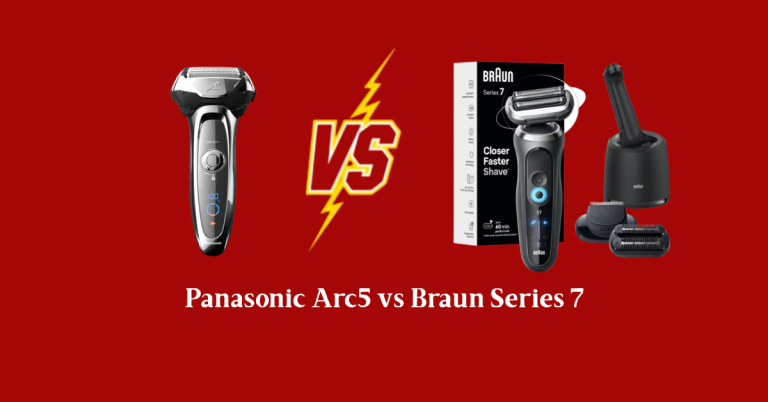Panasonic S1 vs S5 [Which Full-Frame Camera Wins the Battle?]
Panasonic’s full-frame lineup offers two standout cameras that share power but differ in purpose. The S1 brings a solid, professional build with deep controls, high durability, and advanced video tools that cater to serious creators.
The S5 delivers the same image quality in a smaller body that’s easier to carry and more comfortable for travel or handheld shooting. Both cameras feature a 24.2MP sensor, Dual I.S. stabilization, and impressive color science that ensures crisp, detailed results in any condition.
The S1 suits photographers who value control and endurance, while the S5 appeals to those who prefer flexibility without losing capability. Their design and handling set them apart, yet both share Panasonic’s goal of professional-grade performance.
This comparison explores how each camera performs in real-world use and reveals which one stands as the best choice for creators balancing quality, size, and creative control.
Panasonic S1 vs S5 Which Full-Frame Camera Wins the Battle?
The Panasonic Lumix S series offers two strong full-frame mirrorless cameras: the S1 and the S5. Both deliver excellent photo and video quality. The S1 is larger, heavier, and built for professional use.
The S5 is smaller, lighter, and aimed at hybrid shooters and content creators. Comparing them helps you decide which camera suits your needs. This article explores their features, real-world performance, pros and cons, and overall value.
Panasonic Lumix S1
About This Tool
The Lumix S1 is a full-frame mirrorless camera from Panasonic. It uses a 24.2-megapixel full-frame MOS sensor. It supports the L-mount lens system. The body is built to handle rugged conditions, with dust/splash/freeze resistance. This makes it suitable for professional photographers and serious video creators.
Features
-
Full-frame 24.2 MP sensor delivering wide dynamic range and high sensitivity.
-
4K HDR video recording, Hybrid Log Gamma (HLG) support, V-Log upgrade possible.
-
Pixel-shift high-resolution mode (for stills) for very fine detail.
-
In-body image stabilization (sensor shift) helps reduce shake.
-
Robust build with weather sealing and a large electronic viewfinder plus a fully featured tilting LCD screen.
What We Like
-
Excellent image quality for stills thanks to the full-frame sensor and advanced processing. Many users praise its color and detail.
-
Strong video features: the ability to record 4K with good bit-rates, and professional features make it valuable for hybrid shooters.
-
Stabilization works well, letting you shoot handheld in more situations.
-
Durable body design means you can confidently use it outdoors and in demanding conditions.
What We Didn’t Like
-
The camera is somewhat heavy and large compared to more compact models; this can make it tiring for long handheld use.
-
Autofocus in certain video modes or very fast action may lag behind top competitors in mirrorless systems.
-
Some video recording modes are limited (for example, 4K60p might be restricted) unless you apply certain upgrades.
-
Higher price point and many features make it more suited to professionals than casual shooters.
My Opinion
The Lumix S1 stands out as a strong all-rounder for people who shoot both stills and video at a high level. If you need a full-frame body that gives you the flexibility to handle professional work, this camera delivers. For pure casual use it might feel over-qualified, but for serious content creation it holds up very well.
Panasonic Lumix S5
Product Details
The Lumix S5 is also a full-frame mirrorless camera in the L-mount system. It features a 24.2 MP sensor and aims to bridge strong photo and video capability in a more compact, affordable body. It offers many of the premium video and stills features while reducing size and cost.
Features
-
Full-frame 24.2 MP sensor with Dual Native ISO, giving better low-light performance.
-
4K60p 10-bit internal recording, 4:2:2 output via HDMI, support for anamorphic modes.
-
96MP High Resolution mode for stills, and Live View Composite mode (for e.g., starry skies).
-
5-axis Dual I.S.2 stabilization combining body + lens stabilization for up to 6.5 stops of shake reduction.
-
Compact body, flip screen, weather-sealing, good hybrid controls for both stills & video.
What We Like
-
Outstanding value: you get many features of higher-end models (full-frame, 10-bit video, strong stills) for less cost.
-
Video creative tools are excellent: the Dual Native ISO helps in low-light video, and the 10-bit recording gives more room for color grading.
-
For stills it performs very well, especially given its price category.
-
The stabilization system works well, making handheld work much more viable.
-
Good size for travel and hybrid work: less bulky than many pro bodies.
What We Didn’t Like
-
Though still very good, autofocus tracking for very fast action still trails some of the top systems.
-
Battery life is not as strong as some full-frame competitors in heavy video use.
-
Lens kit included (in some bundles) has smaller aperture range; many users may want to upgrade to faster lenses for optimal low-light stills or shallow depth-of-field.
-
Some advanced users might find features missing (e.g., certain pro-video I/O or higher frame-rates) compared to flagship bodies.
My Opinion
The Lumix S5 is a superb choice for hybrid shooters who need strong stills and video performance without carrying the biggest, heaviest bodies. It hits the sweet spot of performance, size, and value.
If your work includes content creation, YouTube, weddings, or travel, the S5 gives most of what you would want. If you push into very high-end professional video, you may find the S1 or other models give more headroom.
Detailed Comparison of Panasonic S1 vs S5
The S1 and the S5 both target full-frame mirrorless photography and video, but they serve slightly different audiences.
Image quality & sensor
Both use roughly the same resolution (24 MP), full-frame sensor. The S1 delivers excellent still image quality and strong dynamic range. The S5 uses the same base sensor architecture and adds features like Dual Native ISO for better low-light video and stills.
In real-world usage testers found the S5 very capable in low light and hybrid use. Geeky Nerdy Techy If still photography is your main goal, the S1 gives you a robust platform. If you shoot both stills + video, the S5 may give better value.
Video capabilities
Here the S5 pulls ahead in many ways for video: 4K60p, 10-bit recording, HDMI output, strong IS, built for hybrid workflows. The S1 also has professional video chops (4K HDR, high-res still mode, robust build) but is heavier, more costly, and may require upgrades to unlock all pro video modes. For serious video work the S5 offers a lot more for less weight and cost.
Build & handling
The S1 is built like a tank: larger body, weather sealing, strong ergonomics for professional use. This makes it great for heavy duty work but less convenient for travel or handheld all day. The S5 is lighter, simpler, more compact, so better for longer handheld use, travel, or lighter crews.
Autofocus & Stabilization
Both offer in-body stabilization. The S5’s Dual I.S.2 gives strong results in handheld shooting. For autofocus, both are good, but if you shoot fast action, you should test for your specific needs. Real-world reviewers noted the S5’s low-light and stabilization performance very good.
Value & target audience
The S1 is aimed at those who need top tier stills + video in a top build, and are willing to carry the cost and weight. The S5 is aimed at hybrid creators, enthusiasts, content makers who want high performance but lower cost and lighter gear.
Summary
-
Choose the S1 if you demand rugged build, top still image quality, and you regularly shoot high-end video/stills and can handle the size & cost.
-
Choose the S5 if you want a very capable full-frame mirrorless system for both stills and video, want to carry less weight, and want excellent value.
FAQs
Q1. Can I shoot professional video with these cameras?
Yes. Both the S1 and S5 support 4K video and have strong features. The S5 offers more accessible pro-video features given its cost.
Q2. Which is better for still photography?
The S1 edges ahead if you prioritize stills quality and rugged use. The S5 still does very well and may suffice for most users.
Q3. Are the lenses the same mount?
Yes. Both use the Leica L-mount (Panasonic’s Lumix S series). That means you can share lenses across both bodies.
Q4. Which is lighter to carry all day?
The S5 is lighter and more compact, so easier for travel or handheld work. The S1 is larger/heavier.
Q5. How do they perform in low light?
Both perform well for full-frame, but the S5’s Dual Native ISO gives it a slight advantage in video and low-light conditions. Still, very low light work may need fast lenses or external lighting.
Q6. Does the S1 have unlimited 4K recording?
According to specs, some 4K modes on the S1 allow unlimited recording, but higher-frame modes may have limits.
Q7. What about price difference?
Typically the S5 offers much of the major performance at a lower price. The S1 costs more due to build, features, and target market.
Conclusion
The Panasonic Lumix S1 and Lumix S5 both deliver full-frame mirrorless performance for stills and video. The S1 leans toward professionals who demand rugged build, high-end stills + video, and are OK with size and cost.
The S5 leans toward hybrid shooters, content creators, enthusiasts who want full-frame quality and strong video in a lighter, more affordable package.
Pick the S1 if you shoot in tough environments, need top build and image quality, and do professional stills/video work. Pick the S5 if you want excellent performance for everyday use, travel, content creation, and video with strong features but less bulk.
Both cameras stand very well in their segments. Your choice depends on your workflow, budget, portability needs, and whether stills or video dominate your work.


![Panasonic S1 vs S5 [Which Full-Frame Camera Wins the Battle?]](https://properdiypro.com/wp-content/uploads/2025/11/Panasonic-LUMIX-S1-Full-Frame-Mirrorless-Camera-with-24.2MP-MOS-High-Resolution-Sensor-L-Mount-Lens-Compatible-4K-HDR-Video-and-3.2-LCD-DC-S1BODY-Black-300x199.png)
![Panasonic S1 vs S5 [Which Full-Frame Camera Wins the Battle?]](https://properdiypro.com/wp-content/uploads/2025/11/Panasonic-LUMIX-S5-Full-Frame-Mirrorless-Camera-4K-60P-Video-Recording-with-Flip-Screen-WiFi-LUMIX-S-20-60mm-F3.5-5.6-Lens-L-Mount-5-Axis-Dual-I.S.-DC-S5KK-Black.png)





